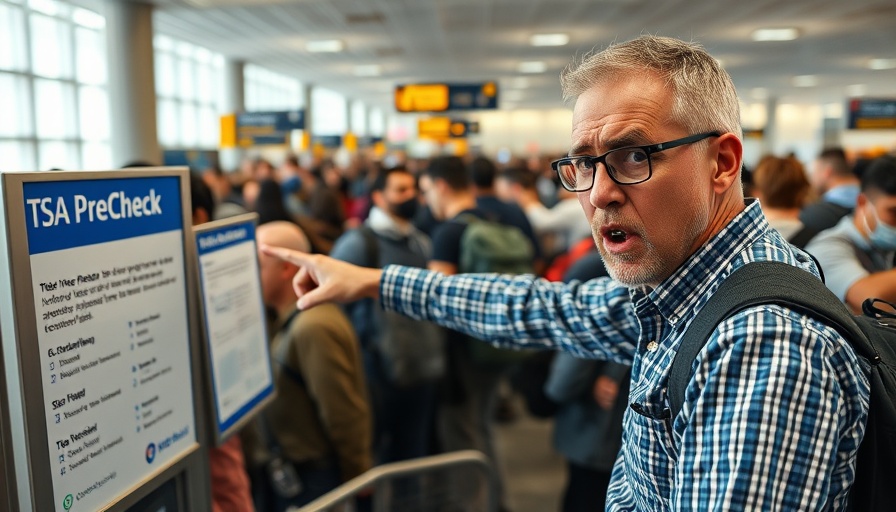
Paving the Way for a VIP Experience at Airports
Traveling can be an exhilarating experience, but airport processes often feel cumbersome and tiresome. Those elite travel experiences aren’t limited to just the wealthiest passengers. As highlighted in the insightful video, 10 GENIUS Airport Upgrades Smart Travelers Swear By, there are several ways average travelers can piece together their own VIP journey, elevating their airport experience without needing to splurge on a first-class ticket.
In 10 GENIUS Airport Upgrades Smart Travelers Swear By, the discussion dives into innovative ways to transform your airport experience, exploring key insights that sparked deeper analysis on our end.
Revolutionary Upgrades: Navigating the Airport Like an Elite Traveler
Did you know that U.S. flyers spent an astonishing 330 million hours waiting in lines at airports last year? With time being one of our most precious commodities, learning about trusted traveler programs can save you hours of your life. Programs like TSA PreCheck, which allows you to streamline your security screening, are available for a modest fee of just $78 for five years. Alternatively, for those who frequently travel internationally, Global Entry can expedite your customs processing significantly.
Additionally, for those flying often between Canada, Mexico, and the U.S., options like Nexus and Sentry come into play. But don’t stop there — the premium option of Clear offers accelerated access through biometric scanning. While it comes with a yearly cost of around $29, frequent travelers through busy airports might find it a worthy investment.
Hidden Hacks That Make Traveling Easier
Consider exploring lesser-known tools that can significantly optimize your airport experience. Some major airports let you reserve a security time slot for free, allowing you to avoid pesky lines altogether. Also, don’t overlook mobile passport control apps that allow you to skip most customs hassles without any costs incurred. Best of all, these upgrades can cater to everyday travelers rather than just premium class passengers.
Using curbside check-in is yet another hack that remains underutilized. Instead of trudging through the terminal to check your bags and grab a boarding pass, these services allow you to check in directly at your car for a tip of around five to ten bucks.
Transforming Downtime into an Experience
One of the most frustrating aspects of air travel is the long wait times at the airport. But airports are beginning to cater to passengers in innovative ways. While waiting for your flight, why not check out a library, museum, or art exhibit? At airports like Singapore’s Changi, you might even find a butterfly garden or rooftop pool. With free tours offered in numerous cities for layovers of 5 to 12 hours, there are countless opportunities for enriching experiences during your waits.
For the sake of comfort during those inevitable long layovers, consider lounge access. Many premium credit cards offer access to exclusive lounges that provide a serene getaway from the bustle of the airport. Not only is it a great place to relax, but you may also encounter amenities like quick chair massages, hydration services, and vitamin treatments unavailable to the general public.
Your Personal Guide Through the Airport
Most people don’t realize that airlines like Delta and American offer 'white glove' experiences, such as expedited check-in and baggage handling, for those looking to enhance their airport transition. Though these services may come with a higher price tag, for someone with ample luggage or an exceedingly tight connection, they can be a great time-saver.
For those willing to spend a bit on a hassle-free navigation experience, third-party meet and greet services can provide curb-to-gate assistance, fast-track access, and baggage help. However, before deciding to go this route, it’s crucial to weigh the costs against the value it brings to your particular situation.
Conclusion: Embrace a New Era of Travel
In summary, the insights shared in the video give us valuable strategies to elevate our travel experience without breaking the bank. Exploring programs like TSA PreCheck, utilizing curbside check-ins, and harnessing the opportunities within the airport, can make a world of difference for the average traveler. As we continue to embrace these upgrades, you'll not only save time but will also redefine what it means to travel smart. So why not start on your next trip? With these tips, you'll not only ensure a smoother journey but also enjoy every moment of it.
 Add Row
Add Row  Add
Add 




Write A Comment